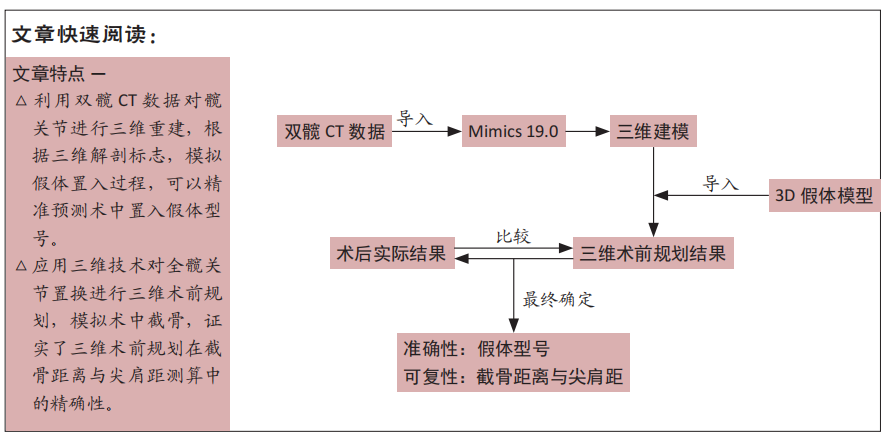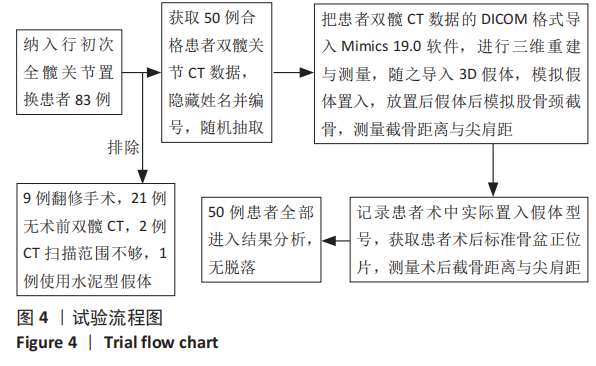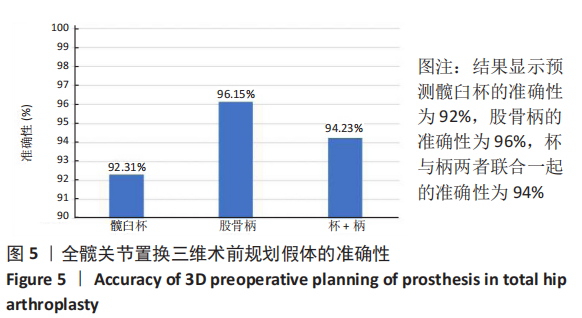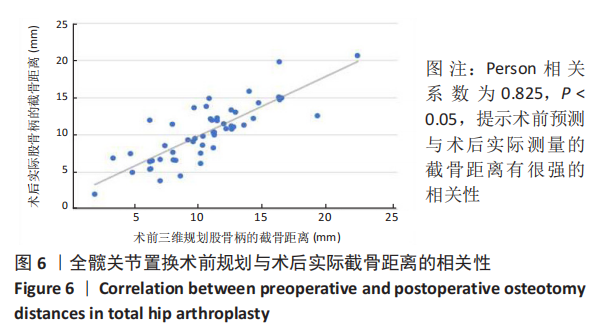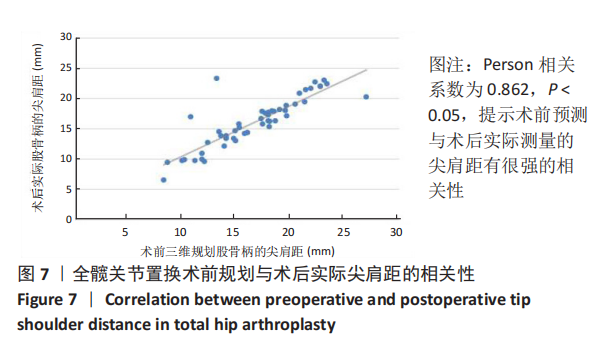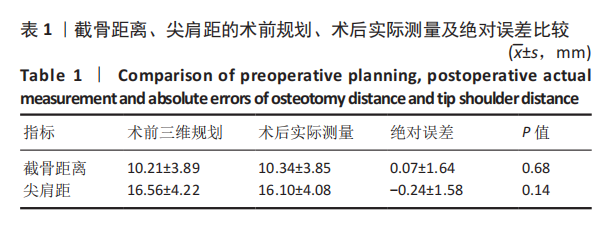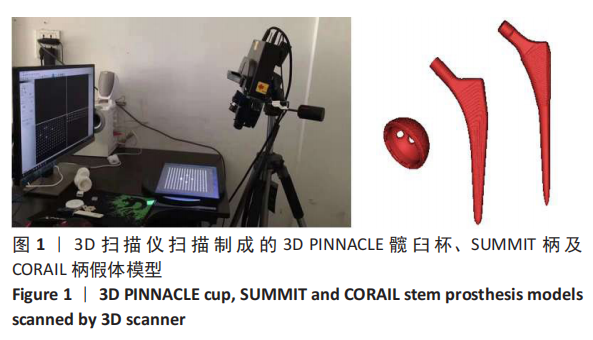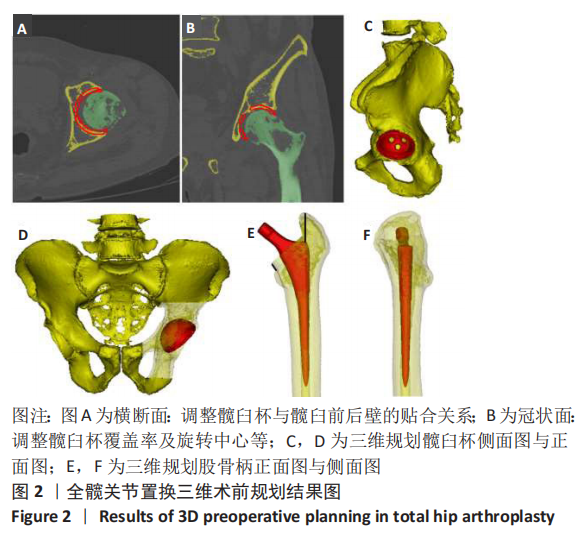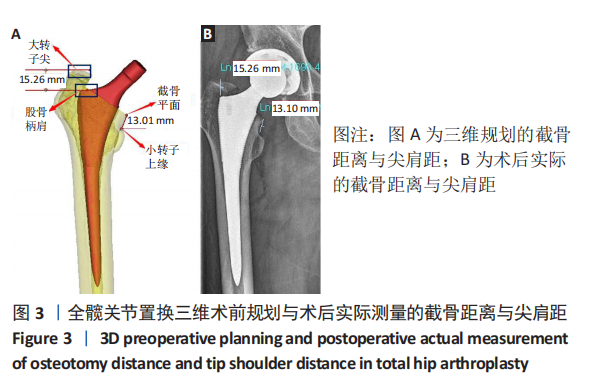[1] HOUCKE JV, KHANDUJA V, PATTYN C, et al. The History of Biomechanics in Total Hip Arthroplasty. Indian J Orthop. 2017;51(4):359-367.
[2] DELLA VALLE AG, PADGETT DE, SALVATI EA. Preoperative planning for primary total hip arthroplasty. J Am Acad Orthop Surg. 2005;13(7):455-462.
[3] OLMEDO-GARCIA NI, MARTÍNEZ VERGARA JL, APARICI MIRALLES TL, et al. Assessment of magnification of digital radiographs in total HIP arthroplasty. J Orthop. 2018;15(4):931-934.
[4] KRISHNAMOORTHY VP, PERUMAL R, DANIEL AJ, et al. Accuracy of templating the acetabular cup size in Total Hip Replacement using conventional acetate templates on digital radiographs. J Clin Orthop Trauma. 2015;6(4):215-219.
[5] SHAARANI SR, MCHUGH G, COLLINS DA. Accuracy of digital preoperative templating in 100 consecutive uncemented total hip arthroplasties: a single surgeon series. J Arthroplasty. 2013;28(2):331-337.
[6] WANG Q, XIAO J, ZHU L, et al. Acetate templating on calibrated standing digital radiograph improves accuracy of preoperative templating for total hip arthroplasty. Orthop Traumatol Surg Res. 2017;103(3):341-347.
[7] STRØM NJ, REIKERÅS O. Templating in uncemented THA. On accuracy and postoperative leg length discrepancy. J Orthop. 2018;15(1):146-150.
[8] IORIO R, SIEGEL J, SPECHT LM, et al. A comparison of acetate vs digital templating for preoperative planning of total hip arthroplasty: is digital templating accurate and safe? J Arthroplasty. 2009;24(2):175-179.
[9] DUETHMAN NC, STATZ JM, TROUSDALE RT, et al. Reasons for Failure of Primary Total Hip Arthroplasty Performed Through a Direct Anterior Approach. Orthopedics. 2020;43(4):239-244.
[10] TOOTSI K, LEES L, GEIKO B, et al. Intraoperative complications in total hip arthroplasty using a new cementless femoral implant (SP-CL(®)). J Orthop Traumatol. 2020;21(1):8.
[11] AL-AMIRY B, MAHMOOD S, KRUPIC F, et al. Leg lengthening and femoral-offset reduction after total hip arthroplasty: where is the problem - stem or cup positioning? Acta Radiol. 2017;58(9):1125-1131.
[12] 任明安, 徐国红, 王利宏, 等. 术中测量股骨假体肩部与大转子顶点垂直高度预防全髋关节置换术后下肢不等长[J]. 浙江创伤外科,2012, 17(5):577-579.
[13] WU P, LIU Q, FU M, et al. Value of Computed Tomography-Based Three-Dimensional Pre-operative Planning in Cup Placement in Total Hip Arthroplasty With Dysplastic Acetabulum. J Invest Surg. 2019;32(7):607-613.
[14] INOUE D, KABATA T, MAEDA T, et al. Value of computed tomography-based three-dimensional surgical preoperative planning software in total hip arthroplasty with developmental dysplasia of the hip. J Orthop Sci. 2015; 20(2):340-346.
[15] VICECONTI M, LATTANZI R, ANTONIETTI B, et al. CT-based surgical planning software improves the accuracy of total hip replacement preoperative planning. Med Eng Phys. 2003;25(5):371-377.
[16] MIURA M, HAGIWARA S, NAKAMURA J, et al. Interobserver and Intraobserver Reliability of Computed Tomography-Based Three-Dimensional Preoperative Planning for Primary Total Knee Arthroplasty. J Arthroplasty. 2018; 33(5):1572-1578.
[17] HASSANI H, CHERIX S, EK ET, et al. Comparisons of preoperative three-dimensional planning and surgical reconstruction in primary cementless total hip arthroplasty. J Arthroplasty. 2014;29(6):1273-1277.
[18] SARIALI E, MAUPRIVEZ R, KHIAMI F, et al. Accuracy of the preoperative planning for cementless total hip arthroplasty. A randomised comparison between three-dimensional computerised planning and conventional templating. Orthop Traumatol Surg Res. 2012;98(2):151-158.
[19] DIMITRIOU D, TSAI TY, KWON YM. The effect of femoral neck osteotomy on femoral component position of a primary cementless total hip arthroplasty. Int Orthop. 2015;39(12):2315-2321.
[20] VLES G, VAN EEMEREN A, TAYLAN O, et al. Anatomical Mapping of the External Obturator Footprint: A Study In Cadavers with Implications for Direct Anterior THA. Clin Orthop Relat Res. 2021;479(2):288-294.
[21] LECERF G, FESSY MH, PHILIPPOT R, et al. Femoral offset: anatomical concept, definition, assessment, implications for preoperative templating and hip arthroplasty. Orthop Traumatol Surg Res. 2009;95(3):210-219.
[22] XU J, QU X, LI H, et al. Three-Dimensional Host Bone Coverage in Total Hip Arthroplasty for Crowe Types II and III Developmental Dysplasia of the Hip. J Arthroplasty. 2017;32(4):1374-1380.
[23] YANG Y, ZUO J, LIU T, et al. Morphological Analysis of True Acetabulum in Hip Dysplasia (Crowe Classes I-IV) Via 3-D Implantation Simulation. J Bone Joint Surg Am. 2017;99(17):e92.
[24] CLUNIE DA. DICOM Format and Protocol Standardization-A Core Requirement for Digital Pathology Success. Toxicol Pathol. 2020: 192623320965893.
[25] ABDEL MP, VON ROTH P, JENNINGS MT, et al. What Safe Zone? The Vast Majority of Dislocated THAs Are Within the Lewinnek Safe Zone for Acetabular Component Position. Clin Orthop Relat Res. 2016;474(2):386-391.
[26] MURPHY WS, YUN HH, HAYDEN B, et al. The Safe Zone Range for Cup Anteversion Is Narrower Than for Inclination in THA. Clin Orthop Relat Res. 2018;476(2):325-335.
[27] NOBLE PC, ALEXANDER JW, LINDAHL LJ, et al. The anatomic basis of femoral component design. Clin Orthop Relat Res. 1988;(235):148-165.
[28] 蒋涛. 解剖型生物固定股骨柄假体的设计特征与临床疗效[D]. 苏州:苏州大学,2015.
[29] 张纪,周一新,周乙雄. 髋关节置换术中股骨假体周围骨折危险因素的分析[J]. 中华关节外科杂志(电子版),2010,4(4):488-493.
[30] ZENG Y, LAI OJ, SHEN B, et al. Three-dimensional computerized preoperative planning of total hip arthroplasty with high-riding dislocation developmental dysplasia of the hip. Orthop Surg. 2014;6(2):95-102.
[31] SARIALI E, MOUTTET A, PASQUIER G, et al. Three-dimensional hip anatomy in osteoarthritis. Analysis of the femoral offset. J Arthroplasty. 2009;24(6): 990-997.
[32] BELZUNCE MA, HENCKEL J, DI LAURA A, et al. Uncemented femoral stem orientation and position in total hip arthroplasty: A CT study. J Orthop Res. 2020;38(7):1486-1496. |
